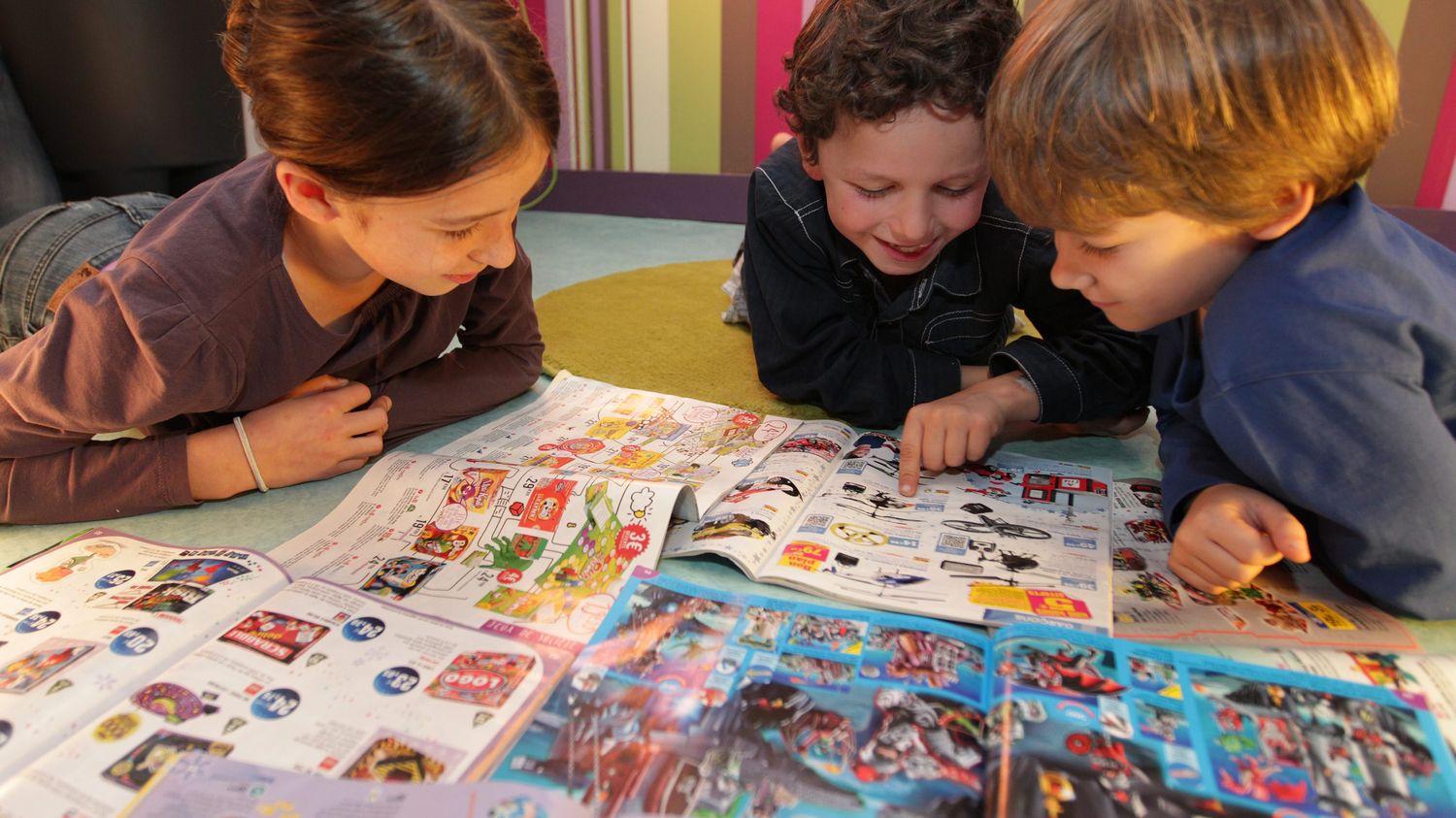It is an essential tool for the magic of Christmas: every year toy catalogs are browsed by millions of children to help select the gifts that will be under the tree on December 25. An essential communication tool for both brands and toy manufacturers.
Santa lists are starting to flourish in children’s rooms, often with the same source of inspiration: the toy catalog. Crucial period for large brands, which achieve on average 55% of their turnover between October and December.
Ten million catalogs distributed
At Joué Club, each year, sales made thanks to the catalog represent 42 million euros. A free catalog for customers, but always essential and particularly lucrative for brands. The cost of each copy is only 1 euro for Joué Club, which distributes an average of ten million.
Behind the 364 pages of images and colors hide a year of work and a real strategy. It all starts with the selection, explains Franck Mathais, spokesperson for Joué Club: “We have a team of thirteen selectors who are store owners, who travel the world, all continents, to unearth new trends. They meet manufacturers, film and cartoon producers, to learn from what will be next year’s Christmas.” This first stage ends in January with 3,000 to 4,000 products which will serve as a basis for the final selection: 2,100 references.
Once the toy selection is complete, the creation of the catalog begins with the communications and marketing team. They go “define creationexplains Franck Mathais, that is to say the image that this catalog will project.” For several years, no more girls or boys categories: “The catalog follows the evolution of society”, assures the Joué Club spokesperson. Now for the categories of activities: “There is everything that revolves around awareness, everything that is wooden games, educational games, science, creation, imaginary worlds (…) board games or even the outdoors. The proposal is made by activities because when we are looking for a toy, we are looking for an activity and it is easier to find our way when the presentation corresponds to the way in which people imagine the use of the toy that they will want to offer .”
A lifespan of three months in each home
Then comes the formatting of the catalog, this involves presenting the products, page by page, with texts, prices, logos and all the necessary information. The first criterion is the estimated potential of the toy: “When we think that we have a flagship toy and that it is important that readers, children and families see that this toy is present in the catalog, we will offer it a privileged place or a graphic design that will highlight it. We can also do a promotion that we will associate with the product.”

The catalog is intrinsically linked to the in-store commercial strategy since “behind each product that is in the catalog, there are orders that have been placed and stocks that will be present in the stores”, underlines the Joué Club spokesperson. To be present in the catalog, brands and manufacturers are required to pay financial compensation that the brand wishes to keep confidential: “The amounts vary,” simply states Franck Mathais but according to him the catalog has a unique media power: “It remains the most economical media of all the media available on the market. It has a lifespan of around three months in homes, it is an everyday media, unlike a TV or the web which is very segmented.”
The paper version always essential
The catalog is printed at the end of August. Distribution to mailboxes and stores is carried out during the first week of October. The paper version remains essential according to Franck Mathais, since it “is aimed at both parents and children. A child of three, four, five years old is not going to spend hours in front of a screen trying to find the toys that Santa Claus is going to bring him. a particularity which means that paper remains essential. Children leaf through the catalog almost every day when they are at home and it is a way for them to prepare for December 25.”
It is also the way for parents to enter the children’s imagination, to discover characters, innovations, trends, which children discuss in the playground, at the leisure center, when they are between friends. For this Christmas 2023, the average budget allocated to gifts is 332 euros, according to a Cofidis survey, carried out in partnership with CSA Research. A figure down by 22 euros compared to last year.
